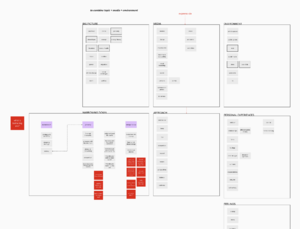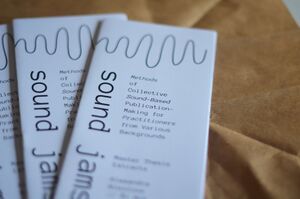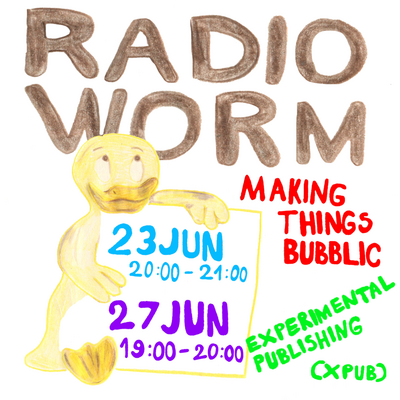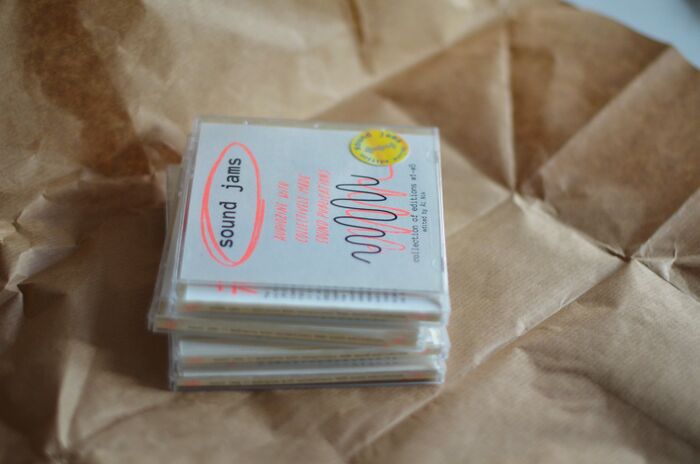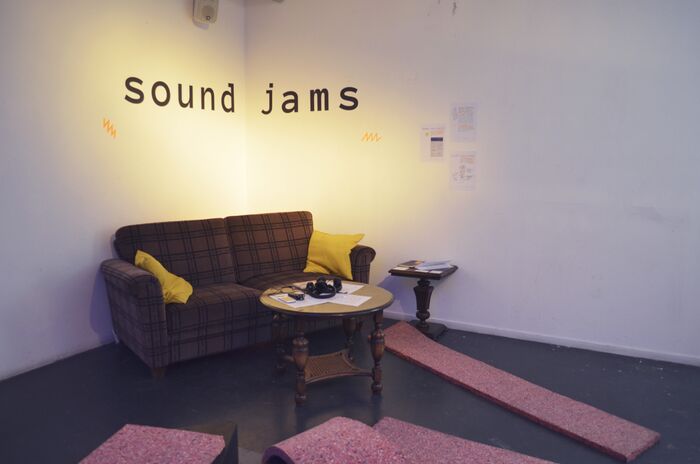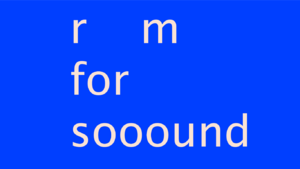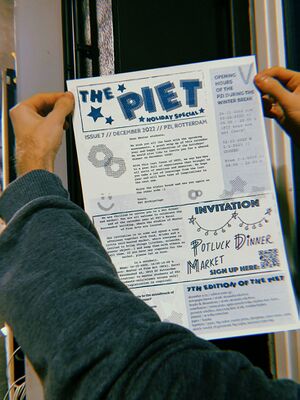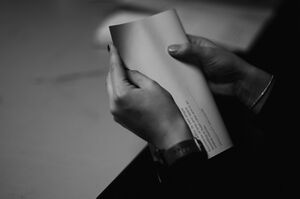Al's xpub2: Difference between revisions
| (4 intermediate revisions by the same user not shown) | |||
| Line 67: | Line 67: | ||
<span style="color: white; text-decoration:none; background-color: #ff0033; padding-top: 0.1vw; padding-bottom: 0.1vw; padding-left: 0.1vw; padding-right: 0.2vw;">▶▶ [[Al's XPUB2 proposal draft]]</span> | <span style="color: white; text-decoration:none; background-color: #ff0033; padding-top: 0.1vw; padding-bottom: 0.1vw; padding-left: 0.1vw; padding-right: 0.2vw;">▶▶ [[Al's XPUB2 proposal draft]]</span> | ||
==== _research | ==== _research ==== | ||
<span style="color: white; text-decoration:none; background-color: #ff0033; padding-top: 0.1vw; padding-bottom: 0.1vw; padding-left: 0.1vw; padding-right: 0.2vw;">▶▶ [[sound jams research]]</span><br> | <span style="color: white; text-decoration:none; background-color: #ff0033; padding-top: 0.1vw; padding-bottom: 0.1vw; padding-left: 0.1vw; padding-right: 0.2vw;">▶▶ [[sound jams research]]</span><br> | ||
| Line 84: | Line 84: | ||
===<span style="color: white; font-family: Menlo; text-decoration:none; background-color: #0033ff; padding-top: 0.1vw; padding-bottom: 0.1vw; padding-left: 0.1vw; padding-right: 0.2vw;">3_ Thesis</span>=== | ===<span style="color: white; font-family: Menlo; text-decoration:none; background-color: #0033ff; padding-top: 0.1vw; padding-bottom: 0.1vw; padding-left: 0.1vw; padding-right: 0.2vw;">3_ Thesis</span>=== | ||
[[File:Sound-jams-reader-2.jpg|thumb]] | |||
<span style="color: white; text-decoration:none; background-color: #ff0033; padding-top: 0.1vw; padding-bottom: 0.1vw; padding-left: 0.1vw; padding-right: 0.2vw;">▶▶ [[Al's XPUB2 thesis outline]]</span><br> | <span style="color: white; text-decoration:none; background-color: #ff0033; padding-top: 0.1vw; padding-bottom: 0.1vw; padding-left: 0.1vw; padding-right: 0.2vw;">▶▶ [[Al's XPUB2 thesis outline]]</span><br> | ||
| Line 105: | Line 106: | ||
===<span style="color: white; font-family: Menlo; text-decoration:none; background-color: #0033ff; padding-top: 0.1vw; padding-bottom: 0.1vw; padding-left: 0.1vw; padding-right: 0.2vw;">5_ Grad Show</span>=== | ===<span style="color: white; font-family: Menlo; text-decoration:none; background-color: #0033ff; padding-top: 0.1vw; padding-bottom: 0.1vw; padding-left: 0.1vw; padding-right: 0.2vw;">5_ Grad Show</span>=== | ||
▶▶ The process of building up to the grad project is also on these insta stories [https://www.instagram.com/stories/highlights/17989313369086977/ here]. | |||
==== _Radio Shows @radio Worm ==== | ==== _Radio Shows @radio Worm ==== | ||
| Line 137: | Line 140: | ||
== <span style="color: white; font-family: Menlo; text-decoration:none; background-color: #cc00cc; padding-top: 0.1vw; padding-bottom: 0.1vw; padding-left: 0.1vw; padding-right: 0.2vw;">Room for Sound </span>== | == <span style="color: white; font-family: Menlo; text-decoration:none; background-color: #cc00cc; padding-top: 0.1vw; padding-bottom: 0.1vw; padding-left: 0.1vw; padding-right: 0.2vw;">Room for Sound </span>== | ||
[ | [[File:Rfs-banner-logo.png|thumb]] | ||
Room for Sound was a 10-day residency inside the Willem de Kooning Academy for students, teachers and other staff of the WDKA and the PZI. The room was used to either start a new artistic project or work on an existing one. In exchange for the room, the resident was asked to record a sound a day: this could range from an in-depth talk about the work to a short observational soundscape. The sounds were uploaded daily to the mywdka homepage so that the academy community could tune in to what’s happening inside the Room for Sound. | |||
During this academic year (2022-2023), the residency welcomed 14 bachelor and master students who used the opportunity to work on their current research and elaborate on their work using the medium of sound. For some of them it was a brand new media, for others - a moment to dive deeper into their interest in the audio format. | |||
What was especially precious for the residents this year, was the chance to have their own place to work at the academy. The room is not a sound studio, but a working space which each one of them could decorate and transform the way they needed it. Most of them also shared that the invitation to create and publish one sound per day was a helpful push and constraint not to get lost into the endless opportunities out there. | |||
During this academic year, the Room for Sound became of home of more than 120 sonic pieces and accommodated plants, illustrations, collective murals, couches, cushens, laughs and conversations. To wrap up the residency, I made an audio mix with selected snippets by the residents. | |||
▶▶ [https://soundcloud.com/room-for-sound/selected-snippets listen here]. | |||
== <span style="color: white; font-family: Menlo; text-decoration:none; background-color: #cc00cc; padding-top: 0.1vw; padding-bottom: 0.1vw; padding-left: 0.1vw; padding-right: 0.2vw;">PZI Archipelago </span>== | == <span style="color: white; font-family: Menlo; text-decoration:none; background-color: #cc00cc; padding-top: 0.1vw; padding-bottom: 0.1vw; padding-left: 0.1vw; padding-right: 0.2vw;">PZI Archipelago </span>== | ||
Latest revision as of 22:16, 6 July 2023
XPUB2
One sentence master project ideas.
0_ Research & prep
Preparations for XPUB2 that started during my first year:
In order to help myself learn how to document (better) and how to do a (proper) research, I joined Harma Staal's workshop at the Research Station: Tagging Topics (20/03/2022). She offered a way to do research using tagging and thinking of topics in tags. The purpose is to narrow down the content - from chaos to focus.
With this approach, the researchers are invited to connect their work and interests with other makers. (maker is now my new favourite word) As artists, we want to speak about perspectives, opinions, notions. Not truths.
Research is not about reading books. It starts with your making. Then, document it, reflect on it, talk about it. Share your knowledge and make new knowledge. When you talk about things you found out, makes them relevant.
Share that with image and text.
Discover my interests and map them
I started with quite broad topics and put them on the board. The next steps was to sort them out and put into groups. Whilst doing that, I identified three main groups of tags that once combined, can create a single project.
main tags to connect:
[topics]
[media/medium]
[environment]
additional ones:
[approach]
[personal experiences]
[feelings]
[Homework] to elaborate on 2-3 topics
In order to do that, I made this Mural board.
[For XPUB2] to identify which topics are interesting for me to research more (and get happily lost into the Rabbit Hole)
Summer Experiments
Following the format of Special Issue #18, I would like to challenge myself to continue with 1 or 2-weekly small experiments (contributions) on my own (or in collaborations) in order to test some quick master project ideas. The idea is to pick a topic of my interest, a read and do a small experiment in the mood of Radio Implicancies. To create an extended gallery over the Summer that might help me find my project of XPUB2. [fingers crossed, hehe]
[concept] mix [topic] + [format] = summarise in a tiny [zine]
▶ summer experiments pad
▶ Summer Experiments wiki
1_ Proposal work
XPUB2 is about creating a balance between making and writing. In order to find out what my master project will be about, i am both following the process, facilitated by the XPUB tutors, and researching tools, methods and topics i am personally interested in. Here are some tools proposed during sessions; and some research and exercises i've been doing on my own:
_interview // activity by Graduate Seminar // 22-sep-2022
▶ interviews with Mitsa [xpub] & Veere [lb] pad
▶ interview highlights
highlights from last year: documentation [wiki love], sound publication, diffractive live mixing, facilitation of sound publication as a method; issue: overwhelmed by possibilities; things i'd like to mix: performing; sound installation; sound publication; illustration; zines; mapping; collective experiences; orchestra jamming; documentation of the project questioning: what should be the topic of the research? or should there be no topic, but method/format experiments? note to self: include being the coordinator of Room for sound in the project.
_hackpact // activity by Graduate Seminar
_proposal drafting - first try
▶ [pad here]
▶▶ Al's XPUB2 proposal draft
_research
Our research has started with the facilitation of sound jams and it explores various directions simultaneously. The sound jams are part of the process of creating a collective sound publication. Each jam reflects on a particular topic and explores participants' reactions to it through sound-making. The jams in our understanding are moments of listening and responding, open to people with or without musical training.
2_ Prototyping
our prototyping classes during XPUB2 are divided in three main categories: M&Ms are mornings when members of the group are facilitating a session to share their research and get feedback; individual tutorials for feedback and additional help by Manetta & Joseph; and focus groups - small groups research and exercises of topics/methods of interest. My documentations on a weekly basis comes here:
▶▶ Weekly: XPUB2 prototyping - Ål Nik documentation
personal prototyping interests:
_pure data for music instruments // learning from sratch _wikimedia for practice documentation // setting up on my server _hosting my own mailing list // no more Mailchimp! _web to print
3_ Thesis
▶▶ Al's XPUB2 thesis outline
The thesis outline was finalised and submitted on 18-11-2022.
▶▶ Al's XPUB2 thesis
The thesis was submitted on 14-04-2023.
4_ Project
▶▶ Sound Jams
Sound Jams: Deluxe Edition gathers five collectively made sonic publications and their visual elaborations within the walls of a CD case. It aims at inspiring practitioners to play with different methods for including sound in their research and artistic practice. This bubblication in a rectangle form collects the outcomes of facilitated group experiences of sound-making and publishing.
There were 5 sound jams that I facilitated to conduct my master's research:
▶ sound jams: reversed words // 3~4-2023 // open online call
▶ sound jams: resister at worm // 12-2-2023 // worm, rotterdam
▶ sound jams: transverse atlantis // 16~20-1-2023 // willem de kooning academy, rotterdam
▶ sound jams: what do books say? // 17-10-2022 // leeszaal, rotterdam
▶ sound jams: m&m at pzi // 10-10-2022 // piet zwart institute, Rotterdam
5_ Grad Show
▶▶ The process of building up to the grad project is also on these insta stories here.
_Radio Shows @radio Worm
Visual for promotion of the shows (illustration & design by Gersande):
Promotional text (written by Gersande and edited by Alex):
🫧 Experimental Publishing Graduation Show & Shop 2023 | Making Things Bubblic 🫧 Warm-up! Across two evenings XPUB (the Experimental Publishing master course at the Piet Zwart Institute) will share their work and research through interviews. Interviews here are interpreted in different ways by each student - they will structure dialogues, discussions and bubbles of thought, mixed with infomercials and sonic material that shares more of our practices. The radio shows are a teaser to invite you to our following graduation show with an opening at Slash Gallery (Worm) on the 29th of June at 6 pm. They are hosted by Ål Nik (Alexandra Nikolova) and Gersande Schellinx. Join us at radio Worm on: _Friday 23rd June, 20:00 - 21:00 _Tuesday 27th June, 19:00 - 20:00 https://worm.org/projects/radio-worm/ 🫧 Ål Nik (Alexandra Nikolova), Chaeyoung Kim, Emma Prato, Erica Gargaglione, Francesco Luzzana, Gersande Schellinx, Jian Haake, Kimberley Cosmilla, Miriam Schöb, Mitsa Chaida and Supisara Burapachaisri 🫧 https://xpub.nl/
_Sound Jams: Deluxe Edition [publication]
My master's project is the publication Sound Jams // Deluxe Edition. It celebrates the launch of my series of facilitated collective sound-based publication makings that I started doing as part of my master’s course research. In the CD case, you will find the first five editions of the sound jams: the stories behind the making, highlights from the process, visual scores, illustrations and, of course, the sonic pieces (on the micro SD card as well as accessible through a QR code & web link). The publication was available for purchasing at the Blob Shop.
_Sound Installation
Sound Jams // Listen and Respond was a cosy, bubbly corner that invited the guests to spend a little time with (some of) the five Sound Jams. They could have a look at a sample of the audiozine publication. The visitors were also invited to respond to what they listened to by leaving an audio recording. The setup took place as part of Experimental Publishing's graduation show at Slash Gallery (Worm) between 29th of June and 2nd of July.
Room for Sound
Room for Sound was a 10-day residency inside the Willem de Kooning Academy for students, teachers and other staff of the WDKA and the PZI. The room was used to either start a new artistic project or work on an existing one. In exchange for the room, the resident was asked to record a sound a day: this could range from an in-depth talk about the work to a short observational soundscape. The sounds were uploaded daily to the mywdka homepage so that the academy community could tune in to what’s happening inside the Room for Sound.
During this academic year (2022-2023), the residency welcomed 14 bachelor and master students who used the opportunity to work on their current research and elaborate on their work using the medium of sound. For some of them it was a brand new media, for others - a moment to dive deeper into their interest in the audio format.
What was especially precious for the residents this year, was the chance to have their own place to work at the academy. The room is not a sound studio, but a working space which each one of them could decorate and transform the way they needed it. Most of them also shared that the invitation to create and publish one sound per day was a helpful push and constraint not to get lost into the endless opportunities out there.
During this academic year, the Room for Sound became of home of more than 120 sonic pieces and accommodated plants, illustrations, collective murals, couches, cushens, laughs and conversations. To wrap up the residency, I made an audio mix with selected snippets by the residents.
▶▶ listen here.
PZI Archipelago
I worked at the team of PZI Archipelago between June 2022 and January 2023 (I was kicked out because wdka couldn't pay me as a volunteer due to my Room for Sound student assistant contract). My main motivation was to continue publishing the regular master students' newspaper the Piet and to support the team in organising workshops and shared moments. As part of my work there, I support the process of publishing the Piet (getting contributions, designing, illustration, printing, folding, and distributing). We work on the Piet together with Emma. I also organise the schedule of workshops facilitated by us. Documenting some of the events, supporting the Open Days at PZI, and doing some graphic design, illustrations etc. are also things I do at the Archipelago. Here are a few highlights of my work there:
The Piet
The Piet // Issue 7 // december 2022
_december 2022 // edition units 250 newspaper layout // al nik (alexandra nikolova) header & illustrations // al nik (alexandra nikolova) contributors // emma prato, agata sznurkowska, stephen kerr, kamo, gersande schellinx, chaeyoung kim, al nik, zoraïma hupkes printed // at wdka rotterdam paper // kasaka typefaces // panic, big caslon, courier prime, phosphate, cutive mono, cabin sketch, oswald, eb garamond, big caslon, american typewriter
Documentation
2022-11-22 // build your own tools by Emma // photographing the workshop
▶ photos of the workshop

